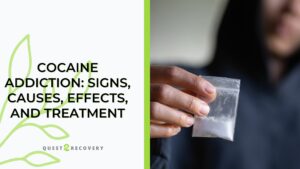Recovering from substance abuse often relies on treating the psyche. At the base of all addiction are mental struggles that need to be cared for. However, the physical body also needs to heal and become the best it can be after meth addiction. We are providing you with a guide in taking care of your physical health after meth addiction.
What is Meth?
Methamphetamine, commonly referred to as meth, is a highly addictive central nervous system stimulant. According to the Substance Abuse and Mental Health Services Administration’s 2017 National Survey on Drug Use and Health, approximately 800,000 Americans ages 12 and older reported using meth within the month before taking the survey.
Meth is classified by the Drug Enforcement Administration as a Schedule II drug. This classification is based on the potential for the drug to be misused.

Side Effects Of Meth
As with anything, there are side effects associated with methamphetamine use. Let’s take a look at what happens when someone uses meth.
Short-Term Effects
When taken, meth and crystal meth create a false sense of well-being and energy, so a person will tend to push his body faster and further than it is meant to go. Thus, drug users can experience a severe “crash” or physical and mental breakdown after the effects of the drugs wear off.
Because methamphetamine suppresses appetite, it can lead to undernourishment for long periods. Eventually, the body consumes muscle tissue and facial fat, giving meth users a gaunt, skeletal appearance. Adverse effects can also include:
- disturbed sleep patterns and insomnia
- hyperactivity
- nausea
- delusions of power and hallucinations
- increased aggressiveness
- irritability and anxiety
- confusion and paranoia
Long-Term Effects
In the long term, meth use can cause irreversible harm, including:
- increased heart rate and blood pressure
- damaged blood vessels in the brain that can cause strokes
- an irregular heartbeat that can, in turn, cause cardiovascular collapse or death
- liver, kidney, and lung damage
- brain damage, including memory loss and an increasing inability to grasp abstract thoughts

What are Meth Sores?
Individuals concerned about meth side effects may wonder, what are meth sores? Meth sores are open lesions or wounds that appear on the skin of individuals who regularly use meth. Sores from meth use appear in several different body areas and can have various physiological or physical causes. How long meth sores last depends on the cause, underlying health conditions, and how rapidly treatment is sought.
Does Meth Cause Acne?
Crystal meth face sores can include acne breakouts due to poor personal hygiene and toxins exiting through pores. Meth also constricts blood vessels, reducing blood flow to the skin and slowing the healing of skin wounds such as meth acne sores.
Meth Mites
Meth mites are a common side effect of persistent meth use and meth addiction. What are meth mites or meth bugs? Meth hallucinations can make meth users feel that they have insects crawling on top or beneath their skin, a sensation referred to as formication or meth mites.
These sensations cause people to consistently pick or scratch their skin to remove the imaginary bugs, leading to open sores and other skin infections. Meth sores and meth mite wounds can become infected if left untreated.
Weakened Immune System
Side effects of continued meth use include a suppressed immune system. What does meth use do to the immune system? Although ongoing scientific studies are beginning to uncover crystal meth’s immune system changes, research shows that meth increases inflammation and limits the activity of immune cells.
Suppressed immune function, in turn, slows the healing of meth sores and makes these open wounds more susceptible to infection. Meth sicknesses also include skin infections with a dangerous antibiotic-resistant bacterium called methicillin-resistant S. aureus (MRSA).

Skin Picking
Why does meth make you pick at your skin? Meth-induced anxiety, hallucinations, compulsions, and poor hygiene contribute to skin picking. Formication, the sensation that bugs crawl on or underneath the skin, commonly leads to skin picking. Once individuals pick their skin, meth sores often become infected and do not heal quickly. Without treatment, skin picking can lead to scabs and scars.
Meth Mouth
Meth mouth sores are a common side effect of regular meth use. Several factors contribute to the development of meth mouth sores. Meth reduces the quantity of protective saliva around the teeth, increasing the risk of tooth decay. Meth users also commonly have a poor diet that includes sugary soda; they also tend to have poor dental hygiene, grind their teeth and clench their jaws.
Meth’s acidity also damages the protective layer of teeth. Although the early stages of meth mouth include dental decay, gum disease, cavities, and mouth sores, later symptoms include tooth blackening, rotting, and tooth loss.
Meth Sores Treatment
Someone who has undergone IOP or substance-specific treatment for their methamphetamine addiction may be left with some questions about treating meth sores or a crystal meth skin rash. The best way to treat or cure meth sores is to stop using meth and make other healthy lifestyle changes. The best approach to ensure meth sores heal correctly is to seek treatment for meth abuse and addiction and completely stop meth use. Without prompt treatment, meth sores can lead to a severe infection or permanent scarring.
Treatment for sores from meth also includes:
- Maintaining a healthy diet.
- Ensuring proper personal and dental hygiene
- Avoiding picking, scratching, or rubbing the sores
- Using over-the-counter acne treatments
- Using natural oils to soothe and moisturize the skin, such as vitamin E
- Addressing underlying mental health conditions contributing to picking through therapy or medication
- Seeing a doctor if an infection is suspected; antibiotics may be prescribed if a condition is present

Treatment for Meth Abuse & Addiction
Meth use is a public health issue. Nearly one million people in the United States were diagnosed with a methamphetamine use disorder in 2017. However, few people seek help. Substance abuse treatment rates for meth have declined by 28% from 2005 to 2015.
If you or a loved one suffers from methamphetamine addiction, many meth addiction treatment programs are available. Some of these include:
- Cognitive-behavioral therapy (CBT) —healthcare specialists may suggest the Matrix Model. This is a 16-week approach for those who abuse methamphetamine. It is a comprehensive program, including behavioral therapy, family education, personal counseling, 12-step support, drug testing, and encouragement for non-drug-related activities.
- Inpatient treatment centers —detoxification and withdrawal are complicated and dangerous processes without proper medical supervision. These clinics provide that guidance by giving medical and psychological support at every step.
- Contingency management interventions —these programs give incentives if you adhere to treatment and maintain abstinence.
Currently, there are no drugs available to counteract the effects of methamphetamines or those caused by long-term drug use.
Our treatment center will conduct a consultation to understand the full scope of the patient’s needs before recommending a treatment plan. Meth addiction often coincides with mental health or substance use disorders, and the right treatment plan will consider any comorbidities.
With the right treatment plan, recovery is possible. Contact our addiction specialist today if you or a loved one needs help with a substance use disorder, including meth use.









